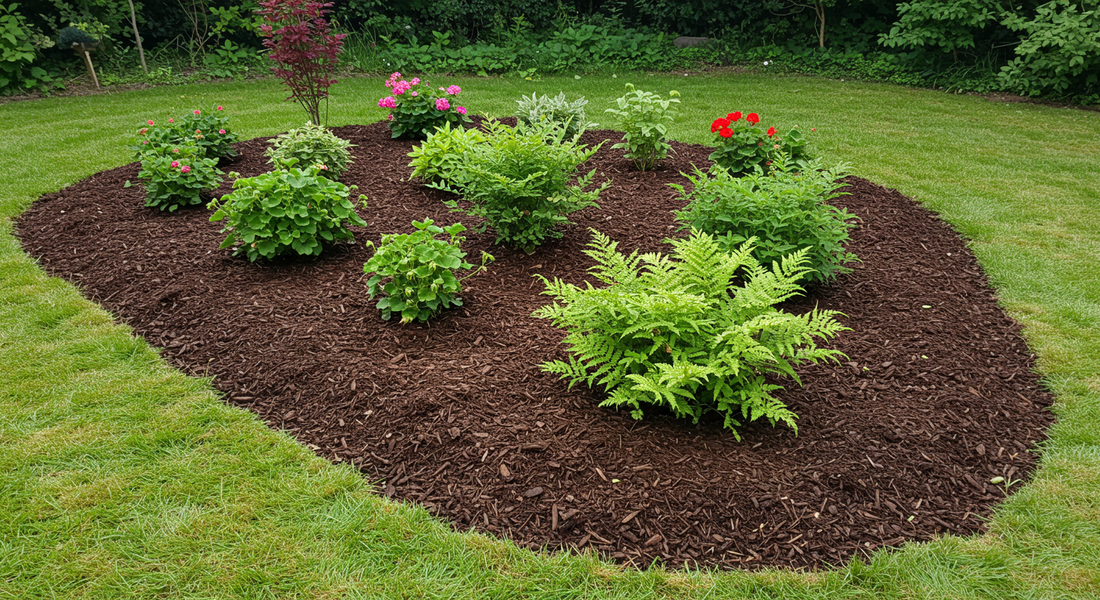
The Pro's Guide to Weed Control: Prevention is the Best Medicine
Share

The battle against weeds can feel like a never-ending war. You spend hours pulling, digging, and spraying, only to see new invaders pop up days later. This is because a reactive approach—only dealing with weeds once you see them—is a losing strategy.
The pro's secret to a weed-free yard is to win the war before it even starts by shifting to a proactive mindset. How to prevent weeds is a much smarter question than how to kill them. By understanding that most weeds spread via seeds lying dormant in your soil, you can focus on strategies that prevent those seeds from ever germinating.
Strategy 1: Mulch, Mulch, Mulch
The single most effective weed prevention strategy is mulching to prevent weeds. A thick layer of organic mulch is a gardener's best friend.
-
How it Works: A 2-3 inch layer of mulch acts as a physical barrier, blocking the sunlight that dormant weed seeds need to sprout. For the few stubborn weeds that might push through, the loose mulch makes them incredibly easy to pull. As an added bonus, mulch retains soil moisture, regulates soil temperature, and enriches the soil as it decomposes.
-
Best Types of Mulch:
-
For Garden Beds: Shredded hardwood bark, cedar mulch, or pine straw are excellent choices. They are aesthetically pleasing and break down slowly.
-
For Vegetable Gardens: Use organic materials that decompose quickly and add nutrients, like straw (not hay, which contains seeds), shredded leaves, or grass clippings (from an untreated lawn).
-
Strategy 2: Pre-Emergent Herbicides
Pre-emergent herbicides are a key tool for effective lawn weed control. They work by creating a chemical barrier in the top layer of soil that prevents weed seeds from successfully germinating.
-
How They Work and When to Apply: The key to success is timing. Pre-emergents must be applied before the weed seeds sprout. For summer annual weeds like crabgrass, this means applying in early spring when the soil temperatures consistently reach 55°F (a good rule of thumb is when the forsythia bushes start blooming). For winter weeds, apply in the fall.
-
Application: Always choose a product designed for your specific use. Lawn pre-emergents are formulated for turfgrass, while garden pre-emergents are designed for use around established plants. Read the label carefully, as some products can inhibit the germination of desirable seeds, like grass seed or vegetable seeds.
Strategy 3: Landscape Fabric
Using landscape fabric for weeds can be an effective, long-term solution in certain areas, but it's not a perfect fix for every situation.
-
Pros and Cons: A high-quality weed barrier is excellent at suppressing weeds. The major con is that over time, organic matter and wind-blown seeds can accumulate on top of the fabric, eventually allowing weeds to grow on the surface. It also prevents the natural enrichment of the soil from decomposing mulch.
-
Best Uses: Landscape fabric is best used in areas where you won't be doing a lot of digging, such as under gravel or stone pathways, in perennial beds, or around established shrubs and trees. It is generally not recommended for annual vegetable or flower gardens.
Strategy 4: Healthy, Dense Lawns
One of the best defenses against lawn weeds is a lawn that is so thick and healthy, there is simply no room for weeds to grow.
-
A Thick Lawn is the Best Defense: A dense, vigorous turf will outcompete weeds for sunlight, water, and nutrients. Your goal is to cultivate a lawn that chokes out weeds naturally.
-
Proper Maintenance: This is achieved through proper cultural practices. Mow your lawn at a higher setting (3-4 inches) to shade the soil and prevent weed germination. Water deeply and infrequently to encourage deep root growth. Feed your lawn with the appropriate fertilizer for the season to keep it strong and dense.
Conclusion: A Smarter Approach to a Weed-Free Yard
Winning the war on weeds is about strategy, not brute force. By focusing on preventative measures like mulching, proper timing of pre-emergents, and cultivating a healthy lawn, you can create a yard that is naturally resistant to weeds. This smarter, not harder, approach will save you countless hours of back-breaking work and result in the beautiful, weed-free landscape you've always wanted.
